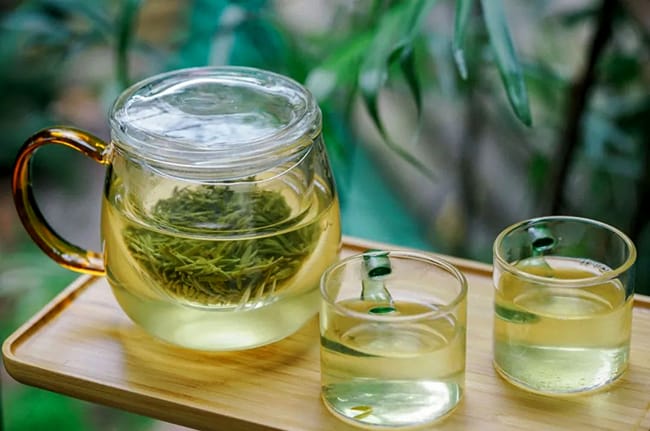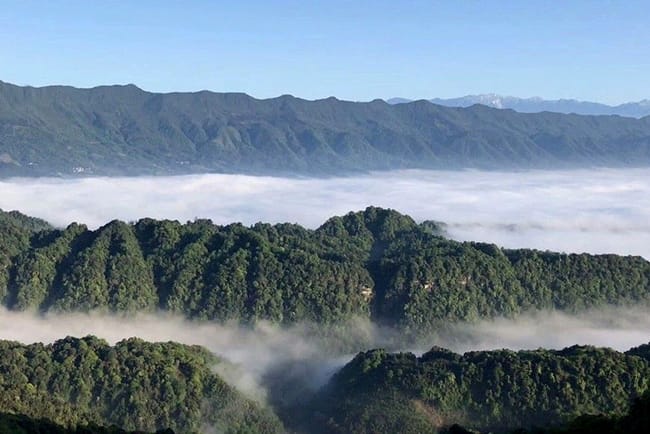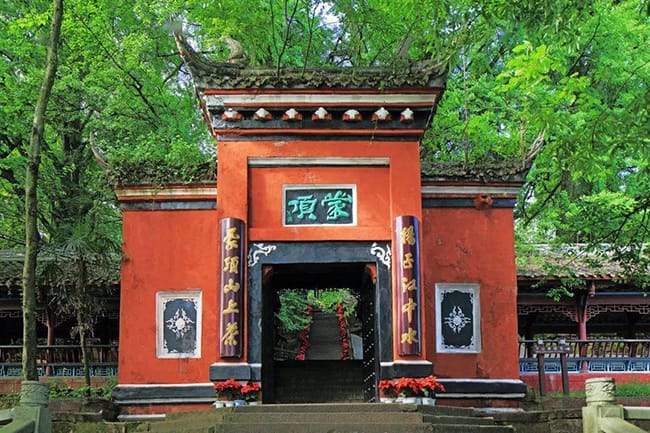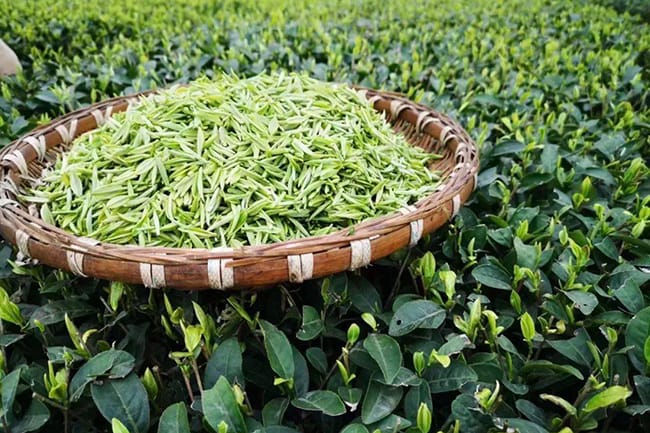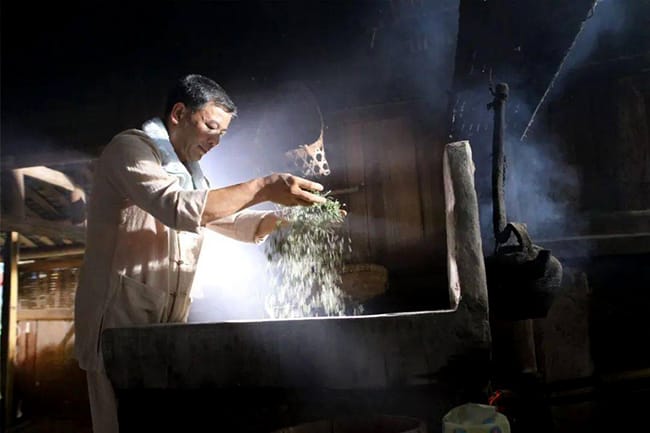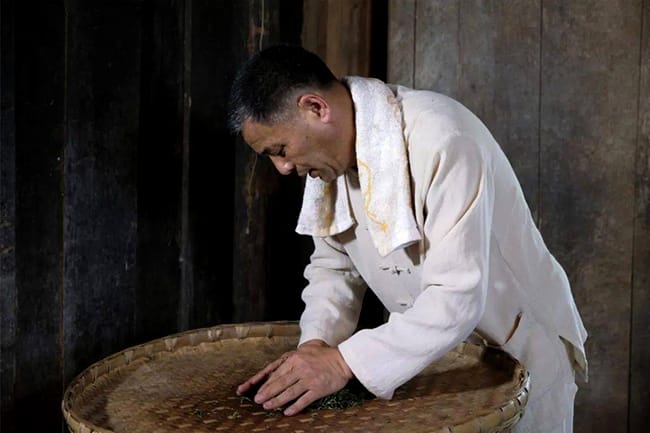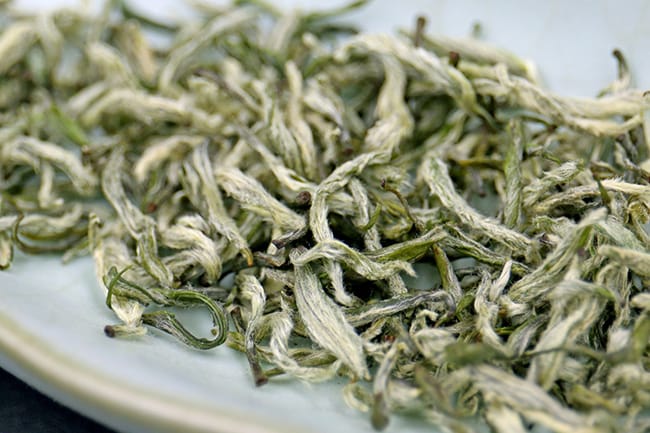Last Updated on 09/13/2021 by Desmond
Ya’an, Sichuan took an important position in ancient China; we’ve talked about this place more than once in the previous articles. It is not just one of the tea birthplaces but also plays an essential role in the neighboring countries’ trade as a transportation junction. And the old Mengding Mountain production area still outputs various quality teas now; Mengding Ganlu tea is one of the famous.
CONTENT
History – The Most Beginning Tea Cultivation Place
Mengding Mountain is located in Sichuan Basin, stretches Mingshan and Ya’an, about 1400 meters altitude. Rainfall fertile and up to over 2000 mm average annual, more than 200 days are in rainy and foggy weather. Cloudy, rainy, and hazy, just like being in a fairyland. People poetic named it “Tian Lou,” which means Sky Leak.
At the Western Han Dynasty about 2000 years ago, a Taoist named Wu Lizhen planted 7 tea trees in 5 hills of the Mengding Mountain and started to study how to process tea. This is the most beginning history of tea tree artificial cultivation recorded by literature. Thus, Wu Lizhen is also honored as Tea Ancestor.
The modern common green tea hadn’t been invented at that time. People fixating the leaves in a steam way and pressing them into blocks. When preparing, it needs to cook and flavored with salt. Due to the unique geographic location, Ya’an became the primary tea supplying source of Xinjiang and Tibet. Later, Ya’an tea has been on many marvelous journeys and evolved into Zang Cha – a partially-fermented dark tea that is more convenient to transport and store.
One Song Dynasty emperor canonized Wu Lizhen as Ganlu Master in 1186. The literal meaning of “Ganlu” is “Sweet Dew.” And in Sanskrit, it has the meaning of cherishing the memory of ancestors. This is a word fully expressing the excellent quality and history of Mengding Mountain teas. The emperor also honored the place where Wu master planted the tea trees as the “Royal Tea Garden,” which still is a tourist attraction with the tea culture spreading aim.
The modern Mengding Ganlu green tea came in the Ming Dynasty (about 1514); it is regarded as the first loose green tea roll into a curly shape. The comparisons among Chinese tea lovers were vogue at that time (read more about that in the articles Chinese Green Tea and Japanese Tea.) Loose leaf tea’s simple brewing way caught the emperor’s attention. The block tea production was being banned, and loose leaf tea began being promoted.
Mengding Mountain output various tea types. One yellow tea processed uniquely – Mengding Huangya is the rarest and only serves the royal. And one saying is that the leaves pick from the Royal Tea Garden are just for the significant sacrificial event use; even the emperor can’t drink it. In comparison, Mengding Ganlu tea is more famous and populist, and it is also listed in one of the Chinese Ten Famous Teas later.
But Mengding Ganlu tea’s fame has reduced a bit in recent years. One side is because there is a limit of the production and challenges on promotion. The other side is West Lake Dragon Well tea and Biluochun are much more famous. Some local tea farmers even prefer to process these popular types but not the Mengding Ganlu; that also damages the reputation of the local tea.
Traditional Processing Method
Picking
Many types of Camellia Sinensis are cultivated in Mengding Mountain tea gardens, and they will all be processed into Ganlu tea. As a green tea, Mengding Ganlu is only harvested in spring, and the picking standard is one bud with the first leaf. The same as the others, leaves harvested in the earlier spring are regarded with better quality.
Frying and Rolling Three Times
Mengding Ganlu tea is made by the traditional method inherited from the Ming Dynasty – frying and rolling three times. Most local tea masters still stick to process the leaves in this manual way.
Leaves after picking will be placed for a while. After that, tea masters will moderately put them into a 220-260℃ iron pot for fixation. During this process, the tea master keeps stir-frying the leaves with his hands until they become soft, losing the grass smell and the water content reducing to about 60%. Then transfer the leaves to a bamboo sieve for a cool down.
After the temperature is down, the tea master will directly take the first rolling to the leaves at the bamboo sieve. Under the continuous rolling by hands, the leaves’ surface will get a certain break, and the juice flows out. It can help the flavor release better in the future brewing.
This method seems to have a similar aim as the shaking in the Oolong tea processing. The difference is that in the Mengding Ganlu case, the tea master will not let the leaves’ juice fermenting after the first rolling, but put them into the pot for the second frying immediately to stop that from happening.
Drying
Leaves will be through frying and rolling three times, shaping into a curly style, and the water content reduced to 15-20%. Finally, the water content will be reduced by further roasting, and the dry tea is made.
How Mengding Ganlu Tea Taste
Mengding Ganlu tea dry leaves look like the green curly bug. They are covered with much tiny fuzz called “Cha Hao” because they were harvested early spring. The fuzz is rich in amino acid, brings a brisk mouthfeel, and is a prove of the tender tea. For this, tea masters need to operate carefully during the processing and remain these hairs as possible.
Although the dry leaves are curling in tight, they will back to their original complete appearance after steeping. The one bud with the first leaf looks like a bird flying in the sky. You can distinguish the tea quality by the leaf’s integrity. The infusion seems almost transparent, just a light yellow even in a high concentration. And the fuzz will float in the water, like the needle tea, reflect shining light.
Leaves from different Camellia Sinensis types will give Mengding Ganlu a bit different on the flavor. Such as the leaves from the Fuding Da Bai tea tree have more fuzz, bring a stronger brisk mouthfeel; some types will with a slight orchid fragrance. However, after times frying and rolling, most Ganlu teas are all taste a robust, sweet chestnut aroma.
Mengding Ganlu tea tastes without the bitterness and astringency of the common green tea. A brisk and fresh feeling will thoroughly moisten your thirsty mouth. After the infusion slip down the throat, your tongue still can feel a sweet after-taste. Maybe that is why the tea is called “sweet dew.”
How To Make Mengding Ganlu Tea
70-80℃ water is the best choice for brewing tender green tea. In this way, the natural ingredients of leaves will not be damaged, and it can also reduce the caffeine releases. You can boil the water first, then pour it into a fair cup for cooling down to the ideal temperature.
Brewing with A Glass Cup
Brewing Ganlu tea with a glass cup is a popular way that suitable for enjoying alone.
- Prepare and preheat a 200ml glass cup
- Add 70℃ water to the 7/10
- Put 3-5g leaves in, steep for 90 seconds
- enjoy
- When the infusion is down below the leaves, make the second brew
- Refill 80℃ water, extend the steeping time to 2 minutes
Brewing with A Gaiwan
Use a Gaiwan to brew Mengding Ganlu tea best for share with your friends.
- Prepare and preheat a white ceramic Gaiwan
- Put moderate leaves in
- Add 70℃ water till to 4/5, cover, steep for about 1 minute
- Pour the infusion into a fair cup to equal the concentration, don’t left a drop in the Gaiwan
- Share to every teacup
- When making the second brew, you also need to increase the water temperature and extend the steeping time
